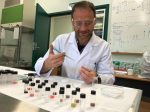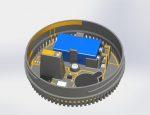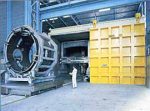200 kilometres in eight minutes: powering the e-mobility revolution
What started as a small start-up in one of ABB’s business units almost a decade ago is now an integral part of the company’s innovative push for sustainable mobility. One innovation after another is coming from ABB developments in electric-vehicle (EV) chargers. The Terra HP is the world’s fastest EV-charger, adding up to 200 kilometres of range to an electric vehicle in just eight minutes. With the number of electric vehicles on the road rising, the global demand for powerful and energy efficient vehicle charging stations is ever increasing. ABB EV-chargers, like the Terra High Power charger, are the driving force behind the efforts of nations to reach sustainability targets and charges have become a critical part of sustainability policies. With more than 7,000 DC fast charging stations installed in 60 countries, ABB is a global leader in that segment. The technology behind e-mobility is truly coming of age, which is also shown in ABB’s partnership with the ABB FIA Formula E Championship. ABB is bringing its name, innovation and technology leadership to the first fully electric motor sport series. The ABB FIA Formula E Championship perfectly supports ABB’s belief that we can run the world without consuming the earth. The series’ next race will be in Zurich on June 10. The ascendance of sustainable mobility and the charging infrastructure required to keep electric vehicles moving is evident by the increasing number of ABB EV charging projects around the world. German energy supplier EnBW alone has 185 EV fast chargers on German motorways and in April, ABB was selected to supply its Terra HP charging stations as part of the biggest electric vehicle infrastructure project to date in the United States. The chargers were selected for deployment by Electrify America, which plans to place hundreds of charging stations within and around 17 […]









